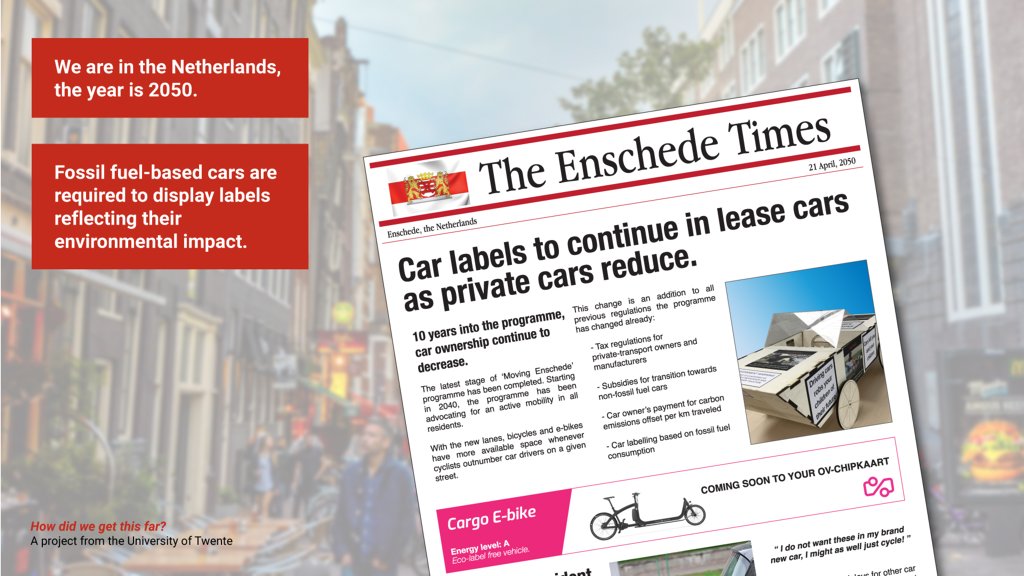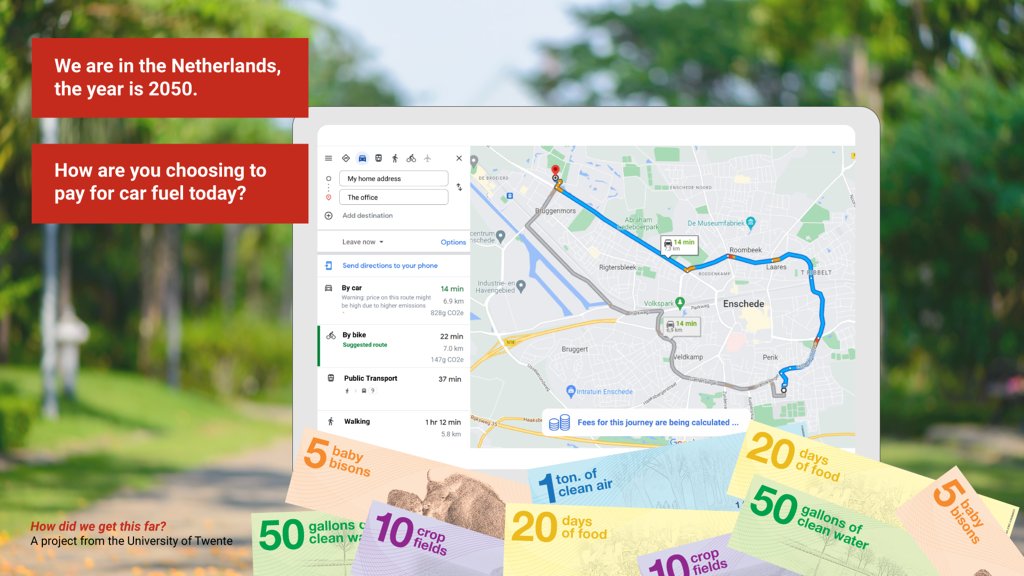How can we transition to a more sustainable mobility system? This was our leading question, shaped by the desire to create a more sustainable transportation system in the Enschede area. By reviewing the literature, and by interacting with experts in mobility and sustainability transition, we discovered that awareness of one's own impact is the key ingredient to spark behavioural change. We decided to use a futuring approach to explore how design could be used to highlight the impact of our everyday choices on our ecosystem. We used scenario-based design to tangibly visualise ecological impact, linking CO2e emissions, energy & fossil fuels to the damage these cause to natural ecosystems.
We’re now in 2050 and the visitor is invited, through our interactive exhibition, to experience car transportation in the future. Round after round of new regulations to limit car-related emissions have been announced by the government; this feels like a weekly occurrence. Private car ownership has been disincentivized and upsetting images like those in the past reserved for tobacco product users now target those with lease cars. These images form tapestries, a macabre collage of splattered roadkill, oil spills, and children suffocating in overly-polluted cities. The visitor can lease a car to simulate their morning commute to work, discovering the CO2e emissions actually generated by their trip and being asked to pay for this, using a new resource-based currency.
Our design highlights the true cost of our transportation system by making the link between car usage and resource depletion explicit, as well as sparking reflection as to what constitutes a "desirable" future.
This project invites visitors to reflect on their own impact when it comes to mobility. In an abstract way, we know that driving a car is not good for the environment, but the impossibility to see the tangible, immediate results of our actions leads us to underestimate our own impact.
Our exhibition is designed to create an interactive experience that accompanies the visitor through the discovery of their own impact on the environment and on society. The design not only spotlights the resources that need to be sacrificed to allow us our daily car journey but also invites visitors to reflect on the impact that a climate emergency could have on our legislature and way of living.





